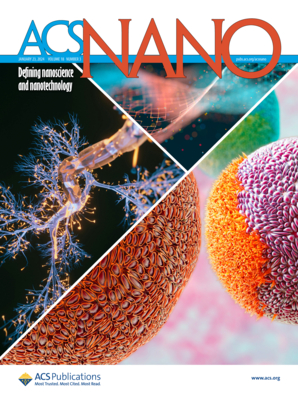实现类突触信息处理的水凝胶中的离子电位弛豫效应
IF 15.8
1区 材料科学
Q1 CHEMISTRY, MULTIDISCIPLINARY
引用次数: 0
摘要
本文章由计算机程序翻译,如有差异,请以英文原文为准。

Ionic Potential Relaxation Effect in a Hydrogel Enabling Synapse-Like Information Processing
The next-generation brain-like intelligence based on neuromorphic architectures emphasizes learning the ionic language of the brain, aiming for efficient brain-like computation and seamless human-computer interaction. Ionic neuromorphic devices, with ions serving as information carriers, provide possibilities to achieve this goal. Soft and biocompatible ionic conductive hydrogels are an ideal substrate for constructing ionic neuromorphic devices, but it remains a challenge to modulate the ion transport behavior in hydrogels to mimic neuroelectric signals. Here, we describe an ionic potential relaxation effect in a hydrogel device prepared by sandwiching a layer of polycationic hydrogel (CH) between two layers of neutral hydrogel (NH), allowing this device to simulate various electrical signal patterns observed in biological synapses, including short- and long-term plasticity patterns. Theoretical and experimental results show that the selective permeation and hysteretic diffusion of ions caused by the anion selectivity of the CH layer are responsible for potential relaxation. Such an effect allows us with hydrogels to enable synapse-like information processing functions, including tactile perception, learning, memory, and neuromorphic computing. Additionally, the hydrogel device can operate stably even under 180° bending and 50% tensile strain, expanding the pathway for implementing advanced brain-like intelligent systems.
求助全文
通过发布文献求助,成功后即可免费获取论文全文。
去求助
来源期刊

ACS Nano
工程技术-材料科学:综合
CiteScore
26.00
自引率
4.10%
发文量
1627
审稿时长
1.7 months
期刊介绍:
ACS Nano, published monthly, serves as an international forum for comprehensive articles on nanoscience and nanotechnology research at the intersections of chemistry, biology, materials science, physics, and engineering. The journal fosters communication among scientists in these communities, facilitating collaboration, new research opportunities, and advancements through discoveries. ACS Nano covers synthesis, assembly, characterization, theory, and simulation of nanostructures, nanobiotechnology, nanofabrication, methods and tools for nanoscience and nanotechnology, and self- and directed-assembly. Alongside original research articles, it offers thorough reviews, perspectives on cutting-edge research, and discussions envisioning the future of nanoscience and nanotechnology.
 求助内容:
求助内容: 应助结果提醒方式:
应助结果提醒方式:


